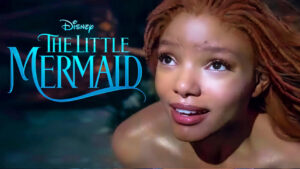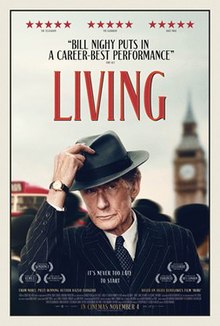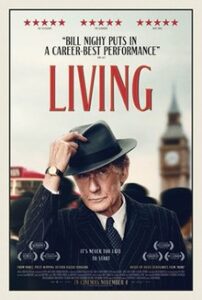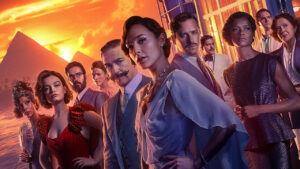Haunted Mansion
Posted on July 26, 2023 at 7:54 pm
B| Lowest Recommended Age: | Middle School |
| MPAA Rating: | Rated PG-13 for scary action and some thematic elements |
| Profanity: | Mild language |
| Alcohol/ Drugs: | None |
| Violence/ Scariness: | Extended horror-style images, scary ghosts, many references to murder and mayhem, disturbing images, very sad (offscreen) deaths |
| Diversity Issues: | Diverse characters |
| Date Released to Theaters: | July 28, 2023 |
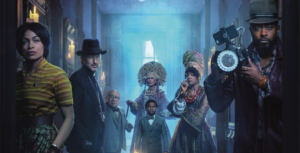
We will not speak of Disney’s first attempt to make a movie based on one of its most popular attractions, except to say that this one is much, much better, with a starry cast, Disney’s can’t-be-beat production design from
Darren Gilford, and, like the theme park attraction, just the right balance of chills, thrills, and comedy.
I highly recommend the “Behind the Attraction” episode about the creation of the Haunted Mansion at Disneyland and Disney World (on Disney+). It has a lot of fascinating behind-the-scenes details about the people and the choices that went into creating the creepy house with elongated elevator, the “Doom Buggy,” and the hitchhiking ghosts that follow you home. You will see th “breath mint, no it’s a candy mint” back-and-forth about whether it was supposed to be funny or scary, and how it ended up as both. Director Justin Simien (“Dear White People” and screenwriter Katie Dippold expertly balance scary and funny in the tradition of the attraction and of classic haunted house films like “The Cat and the Canary,” “The Canterville Ghost,” and “The Ghost and Mr. Chicken.”
The setting, like the imaginary location of the Disney World attraction, is New Orleans. We meet our reluctant hero, Ben Mathias (LaKeith Stanfield) as a shy astrophysicist specializing in lenses to view the previously unseen around us, as he is meeting the woman who will become his wife, Alyssa (Charity Jordan). She says she is also in the business of locating the unseen. She conducts ghost tours.
A few years later, Alyssa has died, and Ben is consumed with grief and guilt. He drinks too much, and he is a grumpy tour guide, strictly history, nothing paranormal. (I’ve been on a New Orleans ghost tour, by the way, well worth it, but watch out for some damaging misdirection.) He gets a visit from a priest named Kent (Owen Wilson), who has been asked to perform an exorcism at a huge haunted mansion recently purchased by a doctor (Gabbie, played by Rosario Dawson with a severe hairstyle), a recent widow with a young son. Ben has no interest in the job and is certain there is no such thing as ghosts, but he cannot resist the $10,000 fee. He half-heartedly pretends to use his fancy lens in a camera with a dead battery to seek ghosts in the house and pronounces it ghost-free.
Needless to say, it is not. And one of the ghosts, a very soggy one, follows him home and forces him to return, this time with a working camera. Soon Gabbie, her son Travis (Chase W. Dillon), Kent and Ben are trying to figure out what is behind all of the hauntings, along with two other members of the team, historian Bruce Davis (Danny DeVito) and medium Harriet (Tiffany Haddish). This self-titled Dream Team has to figure out how to placate the evil spirit before he collects his 1000th soul and is able to wreck havoc on the rest of the world.
The fabulously talented cast gives their all and their all is great fun to watch. Stanfield is, as always brilliant, giving us authenticity in the depiction of his sense of loss without conflicting with the movie’s overall heightened tone. Haddish is hilarious but grounded as the medium, and DeVito gets a chance to, I’m just going to say, get wild. Fans of the attraction will get a big kick out of the many references to its most beloved and iconic objects and characters. This should be a Halloween favorite for generations of families.
There is also a powerhouse list of supporting performers, including Oscar-winner Jamie Lee Curtis as Madame Leota, one of the attraction’s most iconic figures. The original was named for Imagineer Leota “Toombs” Thomas, who provided the spooky head chanting incantations in the crystal ball. Daniel Levy has a tiny role (please let there be deleted scenes) as an actor in another spooky historic mansion. And Hasan Minhaj is very funny as a skeptical but very accurate police sketch artist. As for Oscar-winner Leto, well, he is, as is often the case, unrecognizable as a character originally designed for the attraction but not added until much later, when the technology caught up with the concept.
The movie is scary at times but the references to many murders and offscreen deaths that have caused devastating grief for the characters is more disturbing than the gruesome imagery. Simien is very good at breaking the tension with humor just when it is needed. Like the theme park classic, t is sure to be a Halloween favorite for generations to come.
NOTE: Reportedly, Simien insisted on a Black leading man. For those of us with a sense of movie history, it was especially satisfying to have a Black man as the hero, because this genre often had some of the most damaging stereotypes in movie history, with the only Black characters being terrified in a silly manner as comic relief.
Parents should know: This movie includes many scary and disturbing paranormal images and concepts, with murderous ghosts and grisly images. There are extremely sad offscreen deaths, including a parent and a wife.
Family discussion: Do you believe in ghosts? What did the characters learn about the best way to deal with them? Watch the “Behind the Attraction” episode about the Haunted Mansion and when you get a chance, visit it!
If you like this, try: “The Canterville Ghost,” “Ghostbusters,” “The Cat and the Canary,” “The Ghost and Mr. Chicken,” and “The Addams Family” and its sequel



